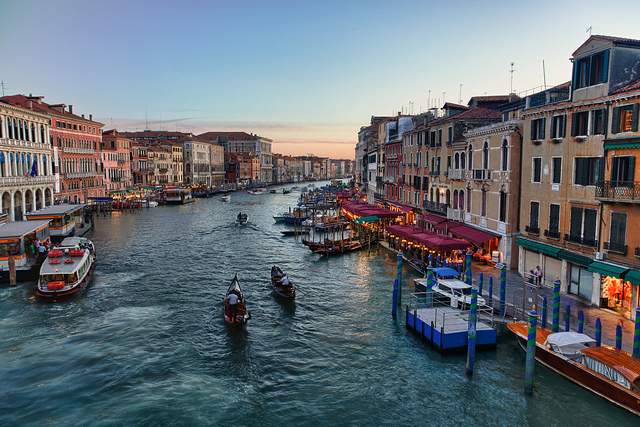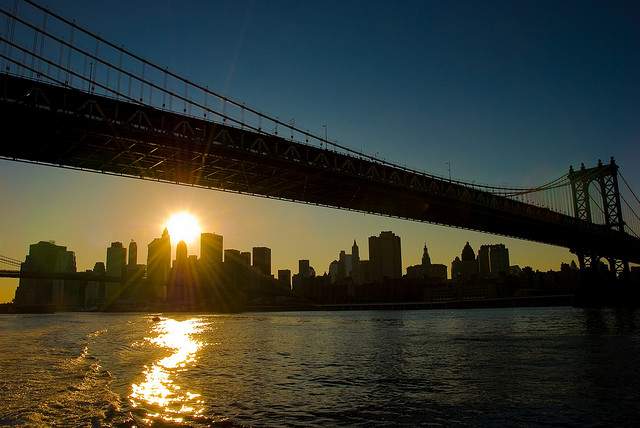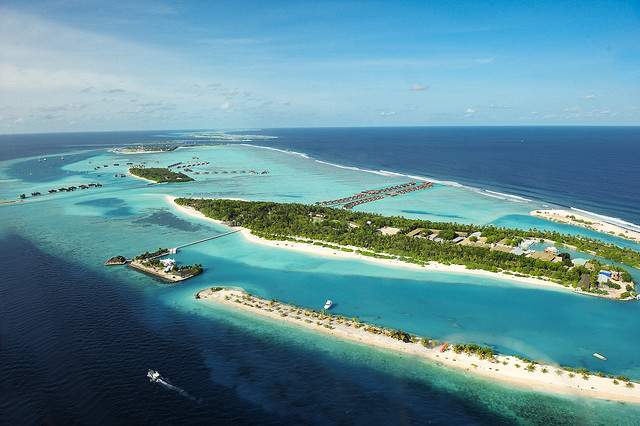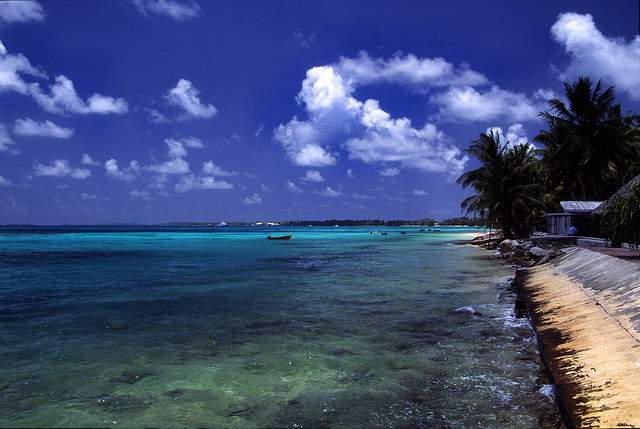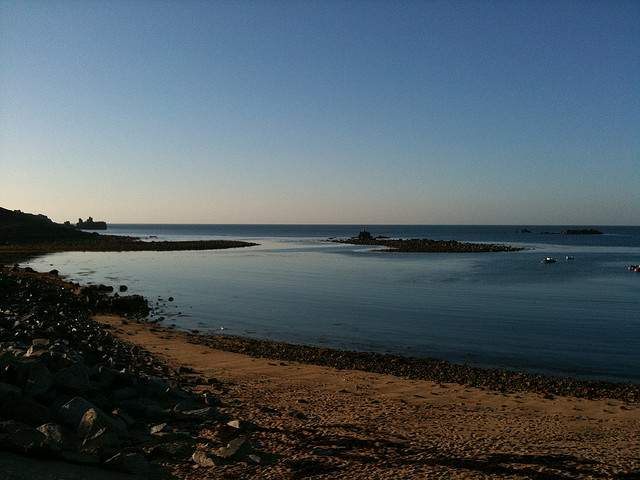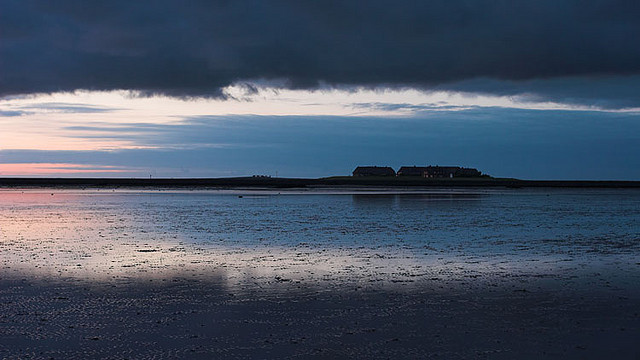Islands often seem like idyllic, isolated pieces of paradise separated from the rest of the world by the vast bodies of water that surround them. Places we can escape to, draw the curtain of the deep blue sea firmly around us, and blissfully disconnect from our everyday lives. In reality we live in a world of global interdependence, where even the most remote island is connected to the rest of the world via the bridge of the sea. One of the most visible signs of this interdependence today can be seen in the effects of global climate change.
The following six vastly different islands are scattered across the world. All of them are world-famous holiday destinations, and all of them, albeit at very different rates, are disappearing into the sea. If visiting any of these islands is a priority for you, and they are not at the top of your travel list, you may want to move them up. Should the predictions of some scientists come true, they may not be around much longer.
Venice
Venice is composed of 118 islands connected by 400 bridges and divided into six large districts or sestieri, three on each side of the Grand Canal. Floods, known as acque alte, have been a part of the Venetian winter for hundreds of years, but since the middle of the 20th century their frequency has increased dramatically. Between 1931 and 1945 the city only had eight serious floods. In the last decade of the 20th century there were 44, and by 2009 the number of annual floods had risen to 200. Climatologists now project a sea level rise of 12 inches or more by the end of the 21st century, a problem compounded by the fact that the city is also sinking on its wooden foundation (9 inches in the last century). The government has approved the MOSE project, due to be completed in 2014, which is a system of mobile gates that are supposed to isolate the Venetian lagoon from the Adriatic Sea for tidal swells of up to 10 feet, but climatologists are not certain that will be enough if global climate change permanently raises sea levels to, or above the gates.
Wandering through the Venice on foot or by boat, one can enjoy a coffee or gelato at tables that have been frequented by Byron, Goethe, Dickens and Proust at Caffe Florian (opened in 1720), off of the elegant Piazza San Marco after exploring the golden-domed Basilica. Take in the Gothic and Byzantine palazzi from a boat ride down the Grand Canal. Enjoy the spectacular art collections at Galleria dell’Accademia and the Peggy Guggenheim. Grab lunch at the bustling open air market near the Rialto; take a waterbus to Murano to check out the handmade glassware, or pick up a colourful Venetian Mask at Mondo Novo. If you are visiting Venice in February, join in the surreal festivities of carnevale. After a long day of sightseeing, enjoy a traditional Venetian supper at the historic Bacaro trattoria Ca D’Oro, Detta alla Vedova (on Calle del Pistor), followed by an opera at La Fenice.
>> Find hotels in Venice or get tips for visiting Venice
[social]
Manhattan
When people think of the island of Manhattan, what usually comes to mind is the towering skyline. Few people realize that most of the Big Apple sits only 16 feet above sea level—a number that drops to five feet in parts of lower Manhattan—and that sea level is predicted to rise by over eight inches by 2021, and between 12 and 38 inches by 2080. The island’s low elevation and high population density make it vulnerable to floods from storm surges and climbing sea level.
Should Manhattan ever go under, there would be a lot to miss. It’s hard to believe that that one of the greatest cities in the world could ever be lost to the sea, but why not use this an another excuse to visit? In New York you can do it all: experience the way early immigrants arrived in Manhattan by catching the ferry from Battery Park to the Statue of Liberty and Ellis Island; immerse yourself Museum Mile—the most densely populated concentration of world class art museums in the world, see a Broadway musical; stand in the light-flooded, cool marble concourse of Grand Central Station (built in 1913) and gaze up at the constellations scattered across the ceiling; climb the stairs of the Empire State Building for spectacular views of the city; visit the September 11 memorial. If you need a break from the crowds, Central Park is an astonishing juxtaposition of green space and high rises. In the summer there are often opera, symphony or Shakespeare performances, and in the fall the foliage is dramatic colors.
>> Find hotels in New York or look for NYC travel deals
The Maldives
The Maldives is an archipelago of 1,190 coral islands and sand banks (200 of which are inhabited) divided into 26 atolls that extend over 511 miles across the Indian Ocean. The country has been at the forefront of the international debate on climate change because 80% of its land lies less than three feet above sea level, and climatologists predict that sea levels will rise by a minimum of three feet by the end of the century, completely submerging the islands.
The Maldives’ palm tree studded pure white sandy beaches and crystal clear blue lagoons teeming with marine life attract over 500,000 tourists annually. The Maldives is a strict Muslim country, so in an effort to preserve local culture, visitors are only permitted on 11 of the 26 atolls. All activities on the Maldives are linked to the sea: take a scuba diving or snorkelling tour of the archipelago’s pristine coral reefs; go on a sea plane ride for spectacular views; lounge in a hammock beneath the shade of a coconut palm, or get pampered in one of the many spas. The Maldives is not a budget destination, so go prepared to splurge—big time – and start saving now, as the islands are among the most endangered on this list.
>> Find flights to the Maldives and read about how to plan a luxury trip for less
Tuvalu
Tuvalu is a chain of nine Polynesian islands located in the Pacific Ocean midway between Australia and Hawaii. With an area of just ten square miles, and an average elevation of just over three feet, Tuvalu is the fourth smallest country in the world, and the second lowest lying (after the Maldives). The predicted sea level rise over the next century could make the country uninhabitable.
One of the highlights of visiting Tuvalu is getting to dive, snorkel, swim, and sail in the twenty square miles of coral reefs, lagoons, and uninhabited islets that make up the Funafuti Conservation Area. Spend the day floating with fish in the turquoise waters, or watching the protected seabirds and turtles. Visits can be arranged through the Conservation Area Office at the Funafuti Town Council. Other noteworthy destinations are the twin lagoons of Nanumea, in the northwest; the eleven coconut tree-covered islands surrounding the Nui Lagoon (of which the northernmost, Terikai, is most renowned for its pristine beauty), and the seabird colonies on Nukufetau’s easternmost islands.
>> Read about the most remote islands in the world or look for adventure trips in the Pacific Islands
The Isles of Scilly
The Isles of Scilly are an archipelago of five low-lying, wind-swept granite islands and over 100 uninhabited islets off the Cornish peninsula of Great Britain. The islands have steep rugged cliffs, sub-tropical vegetation and wild and cultivated flowers that color the island from spring to fall, pristine, clear bays and white sandy beaches. Lying 28 miles out in the Atlantic makes the Isles extremely exposed to the elements. Climatologists project that more frequent and increasingly violent storms, combined with a projected sea level rise could inundate the lower-lying areas.
Explore St. Mary’s (the capital) coastline by foot or bicycle (St. Mary’s Bike Hire); enjoy tea at a café along the way; stop at the Isles of Scilly Museum, and get a good night’s rest at the Star Castle, with spectacular views of Hugh Town and out to sea. If you feel like exploring the other islands, Tresco’s sub-tropical Abby Garden, with over 20,000 species from 80 countries, was started in the 1803s. Be sure to check out the collection of figureheads taken from local shipwrecks. The gardens have a café that serves fresh cake and lunch items. The New Inn in New Grimsby Harbour offers a superb view of the ocean and freshly caught white crab for dinner. St. Martins boasts one of the U.K.’s best beaches at Great Bay, snorkelling with seals, as well as a vineyard and wine-tasting tour. Visitors to St. Agnes can watch fishermen pull in their nets on Pergilis beach or take a tour of Troytown Farm and sample homemade ice cream.
>> Read about more places to visit in England outside of London
The Halligen Islands
The Halligen Islands are ten German islands in the North Fresian Islands in Schleswig-Holstein’s Wadden Sea. The islands are so low-lying that all buildings are built on three-foot high man-made hills called Warften, which are the only part of the islands that remain above water during storm surges. There once were more than fifty Halligen Islands. Most have already been reclaimed by the sea.
Life on the Halligen Islands is dependent upon tourism, coastal protection, and raising cattle in salt meadows that are often flooded. The islands lie within the Schleswig-Holsteinisches Wattenmeer National Park—a UNESCO World Heritage Site stretching over an area of 2700 square miles that is a nesting ground and resting spot for over two million species of migratory birds. The islands offer mudflat hiking and bird-watching tours; guided horseback riding along the tide-rippled floor of the Wadden Sea; and inter-island excursions. Most visitors use Langeness, Gröde or Hallig Hooge as their home base. Hus Halligsblick on Hallig Hooge has cozy, bright rooms with exquisite views. Pick up picnic ingredients at the local shop before you head outside for the day; enjoy local artwork and traditional ceramic pieces Hallig Gallerie, and end your day with a hearty seafood supper at Friesenpesel.
Read more about islands around the world:
- 5 Enchanting Islands of the North Atlantic
- 6 Mediterranean Islands Not to Miss
- Around the World in 7 Lesser-Known Islands
- Nine Awesome American Islands
Photos by: albert_debrujin, juan jolistium, maapu, mrlins, Jeremy Pearson, n0ll
